At the end of the season, with cool weather on the forecast and garden plants winding down after the rush of summer growing, many gardeners don’t think about harvesting a fall crop.
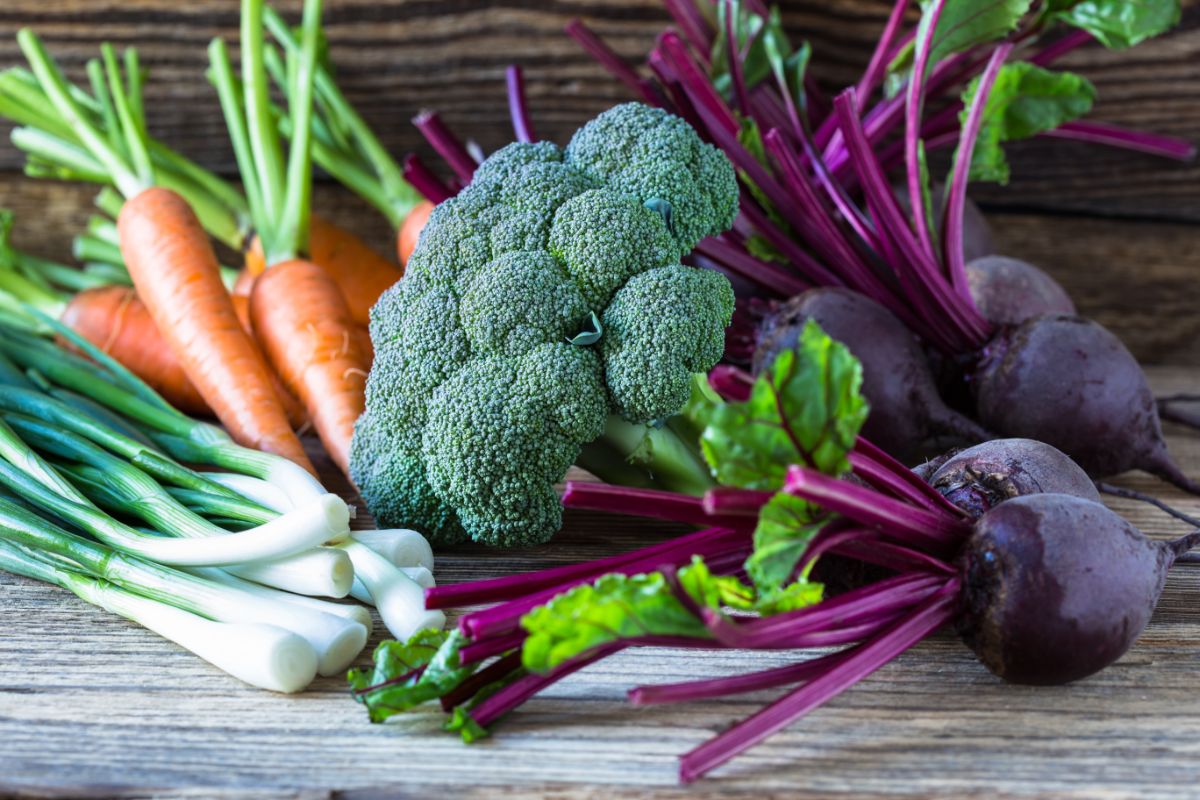
But many cool-weather vegetables grow best in autumn, and their flavor can actually improve after a fall frost or two. If you want to get more out of your garden and gather a larger crop of veggies, the list below is packed with the best vegetables to grow for an autumn harvest.
Jump to:
- 24 Best cool weather vegetables to grow for an autumn harvest
- 1. Cabbage
- 2. Carrots
- 3. Lettuce
- 4. Dill
- 5. Swiss chard
- 6. Radishes
- 7. Spinach
- 8. Broccoli
- 9. Beets
- 10. Cilantro
- 11. Peas
- 12. Mustard
- 13. Turnips
- 14. Radicchio
- 15. Leeks
- 16. Mache
- 17. Kale
- 18. Onions
- 19. Garlic
- 20. Arugula
- 21. Cauliflower
- 22. Endives
- 23. Parsnips
- 24. Collard greens
- Summary
24 Best cool weather vegetables to grow for an autumn harvest
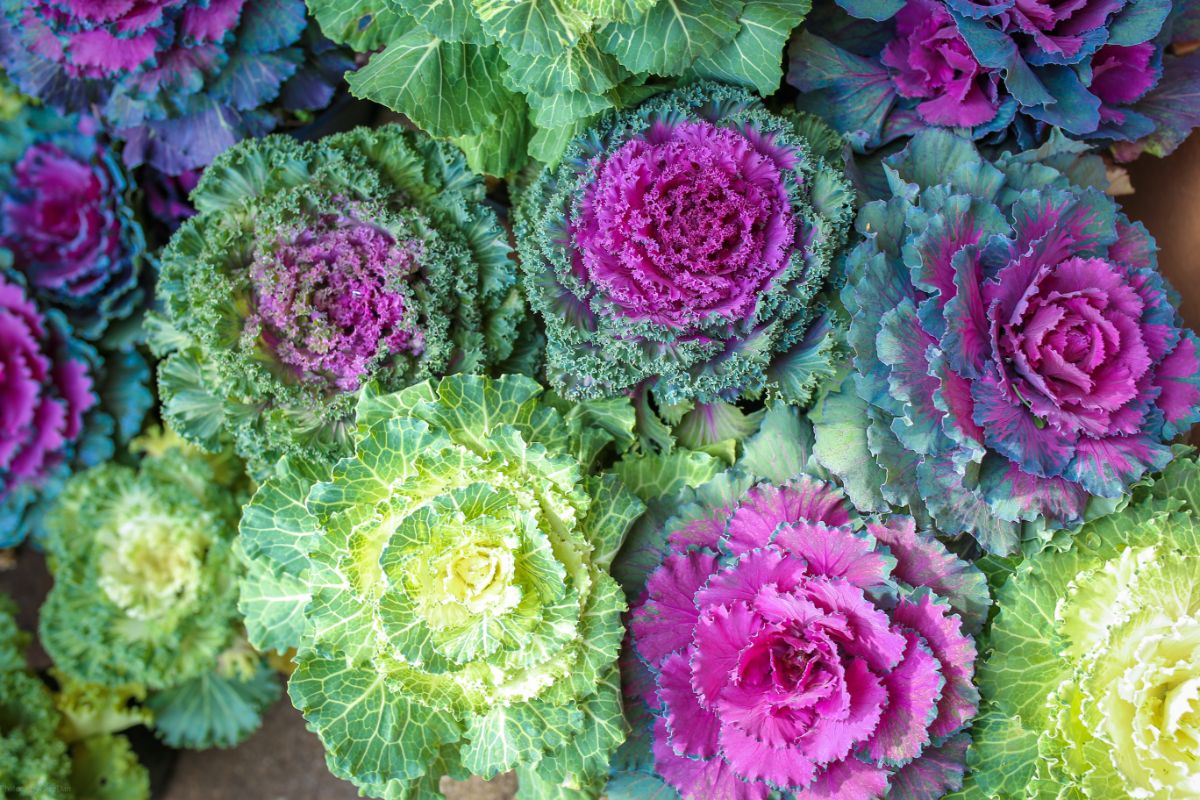
Many of the vegetables that bolt in the summer heat come alive in autumn gardens. Here are some of our favorite plants to grow in autumn if you want to harvest homegrown veggies even after the weather begins to cool.
1. Cabbage

| Plant name: | Cabbage |
| Lighting requirements: | Full sun |
| Watering requirements: | Moderate |
| Recommended varieties for fall? | ‘Autumn Savoy,’ ‘Ruby Perfection,’ ‘Tribute’ |
| When to plant for fall harvest? | 6 to 8 weeks before the first frost date |
Cabbage and other cruciferous vegetables love cool weather, and they tend to suffer in the summer heat. So if you’re looking for a good plant to grow in your autumn garden, you may want to try out heading cabbage varieties.
When temperatures get too hot, cabbages often won’t produce heads, or they may bolt or split. However, in autumn, cabbages will appreciate the lower temperatures, and these plants are even hardy enough that they can handle some frost if temperatures drop unexpectedly. Even better, if you grow cabbage in autumn, you’ll have plenty of ingredients on hand for homemade sauerkraut!
2. Carrots
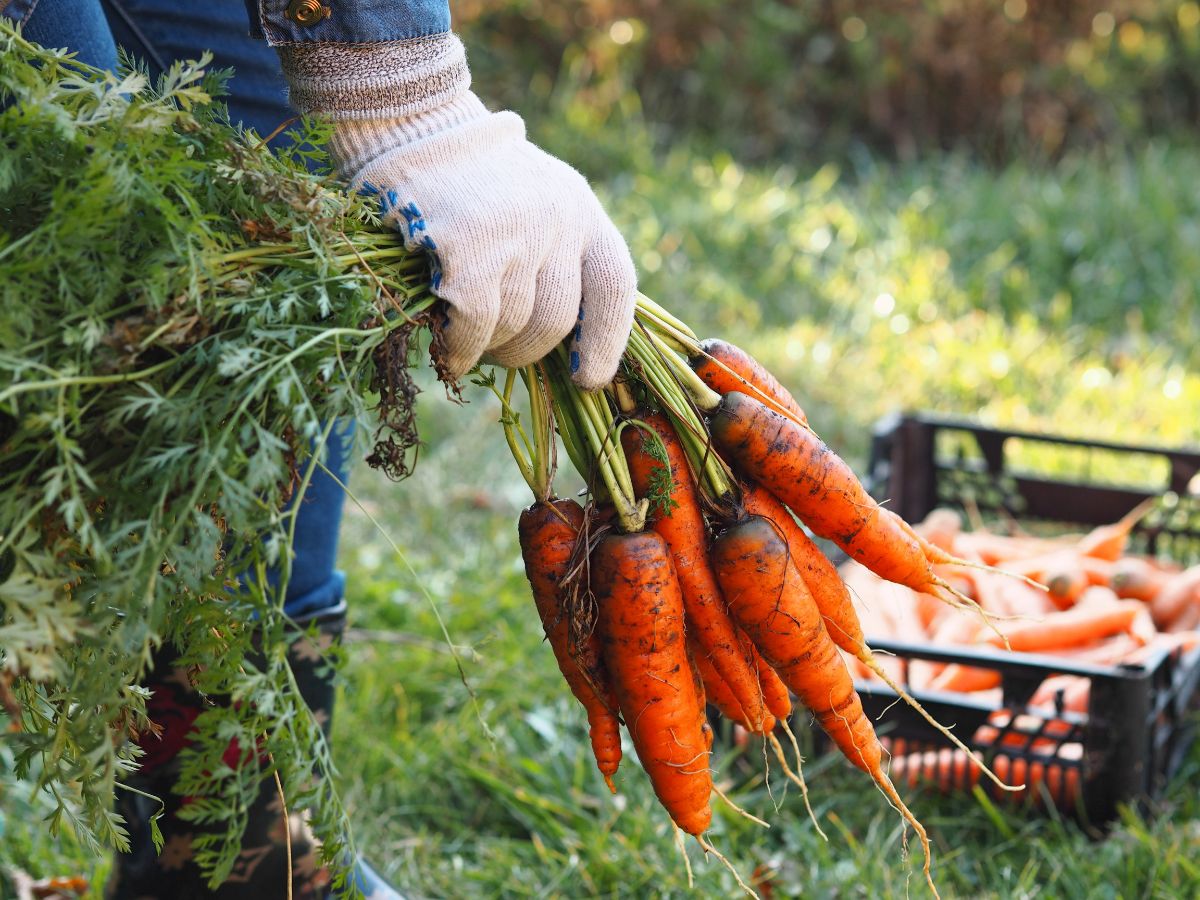
| Plant name: | Carrots |
| Lighting requirements: | Full sun |
| Watering requirements: | Moderate |
| Recommended varieties for fall? | ‘Red Cored Chantenay,’ ‘Rumba,’ ‘Bangor’ |
| When to plant for fall harvest? | 10 weeks before the first frost date |
Carrots can be grown in garden beds throughout the summer; however, when temperatures rise, carrot flavor often suffers. When grown in hot weather, carrots are usually quite bitter, and they lack the sweetness we expect from a quality, homegrown root vegetable. For this reason, many growers only plant carrots in spring or autumn gardens when the temperatures are cool.
When selecting carrots for your autumn garden, you can try out fast-growing carrots like ‘Naval’ and ‘Parisian’ carrots, which are ready to harvest in about 70 days. Or you can grow storage carrots, which are ideal for root cellars, although they take a bit longer to mature. Carrots can even withstand a few frosts, and they may become even sweeter for it!
3. Lettuce
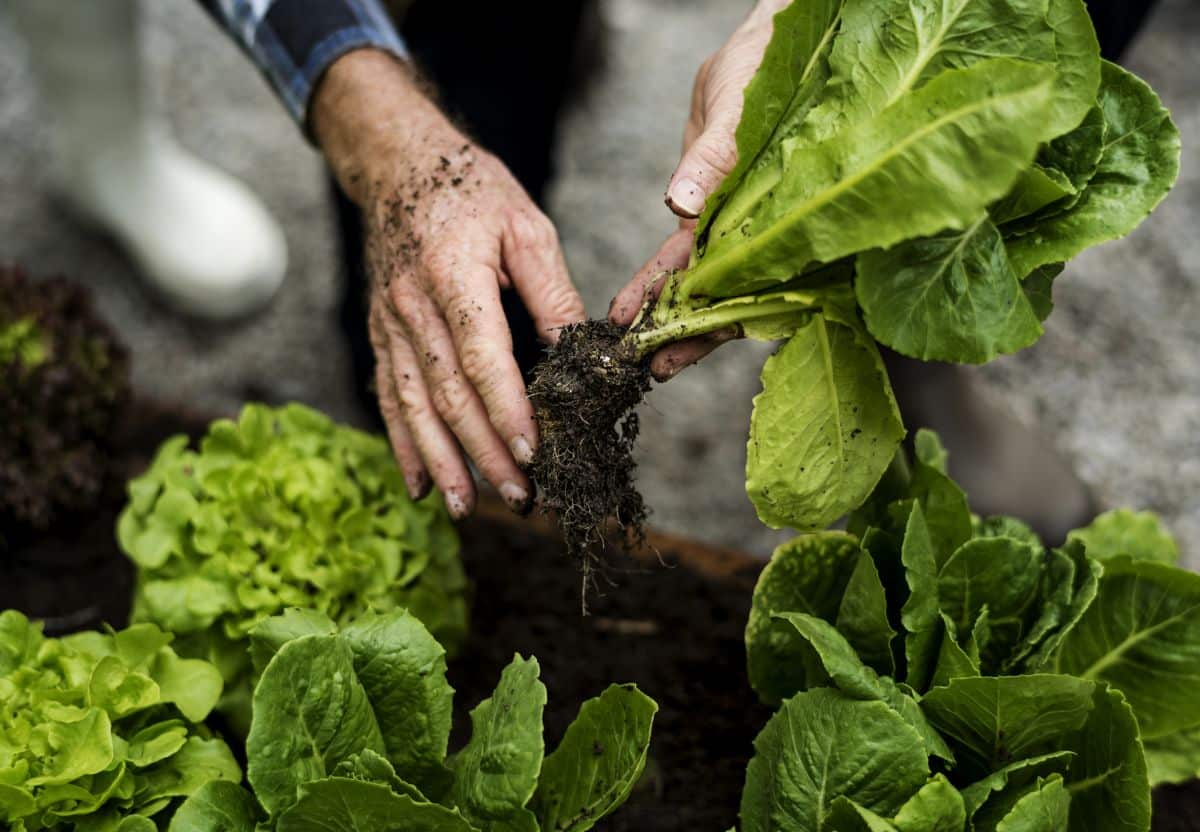
| Plant name: | Lettuce |
| Lighting requirements: | Full sun to part shade |
| Watering requirements: | Moderate |
| Recommended varieties for fall? | ‘Pandero,’ ‘Rouge d’Hiver,’ ‘North Pole’ |
| When to plant for fall harvest? | Late summer |
Some lettuce varieties, like ‘New Red Fire,’ have a good deal of heat resistance and can usually be grown in summer gardens. But the vast majority of lettuce types grow best in cooler weather, and they’ll often bolt if they get too hot. If you enjoy making spring salads with homegrown lettuce, there’s no reason why you can’t grow more lettuce in autumn and harvest fresh leaves for fall eating too!
Lettuce isn’t quite as cold-hardy as some other autumn veggies, but it may be able to handle a light frost or two. You can either directly sow lettuce seeds in your garden, or you can start seeds indoors and transplant the starts outside in late summer to early fall. While you can grow many different lettuce varieties in autumn gardens, some of the top options are slow-growing lettuces like romaine that really struggle to grow in the heat.
4. Dill
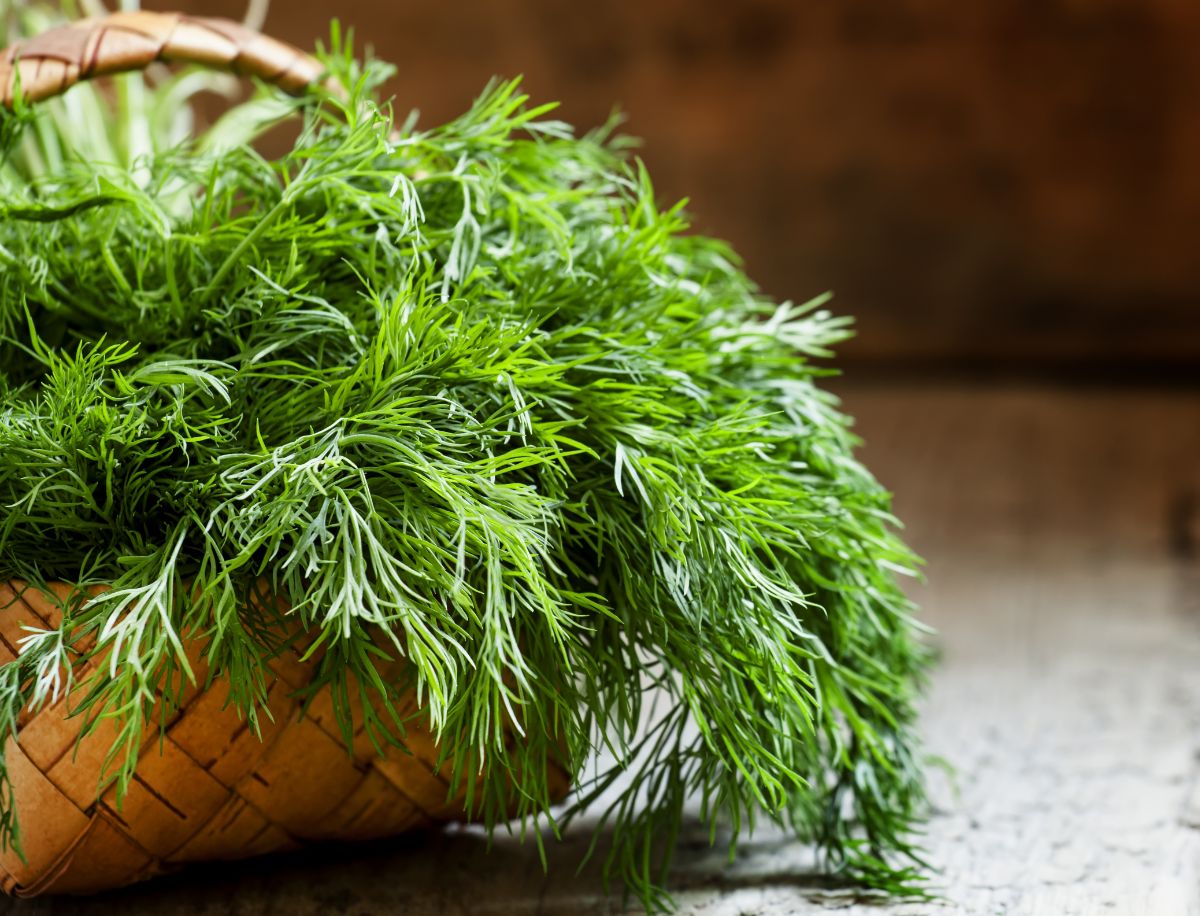
| Plant name: | Dill |
| Lighting requirements: | Full sun to part shade |
| Watering requirements: | Moderate |
| Recommended varieties for fall? | ‘Dukat,’ ‘Mammoth,’ ‘Bouquet’ |
| When to plant for fall harvest? | Late summer to early fall |
If you’ve ever grown dill during the summer, you know this plant loves to bolt! When dill bolts, it produces flowers rather than leaves, and the plant’s flavor declines dramatically. That’s why most gardeners only grow dill in spring and autumn.
Since a lot of home preserving is done in the fall, keeping dill in your garden makes a lot of sense. If you like making homemade dill pickles or dilly beans with your harvest, growing your own dill in autumn will ensure you have the freshest herbs to add to your canned goods whenever you need them!
5. Swiss chard
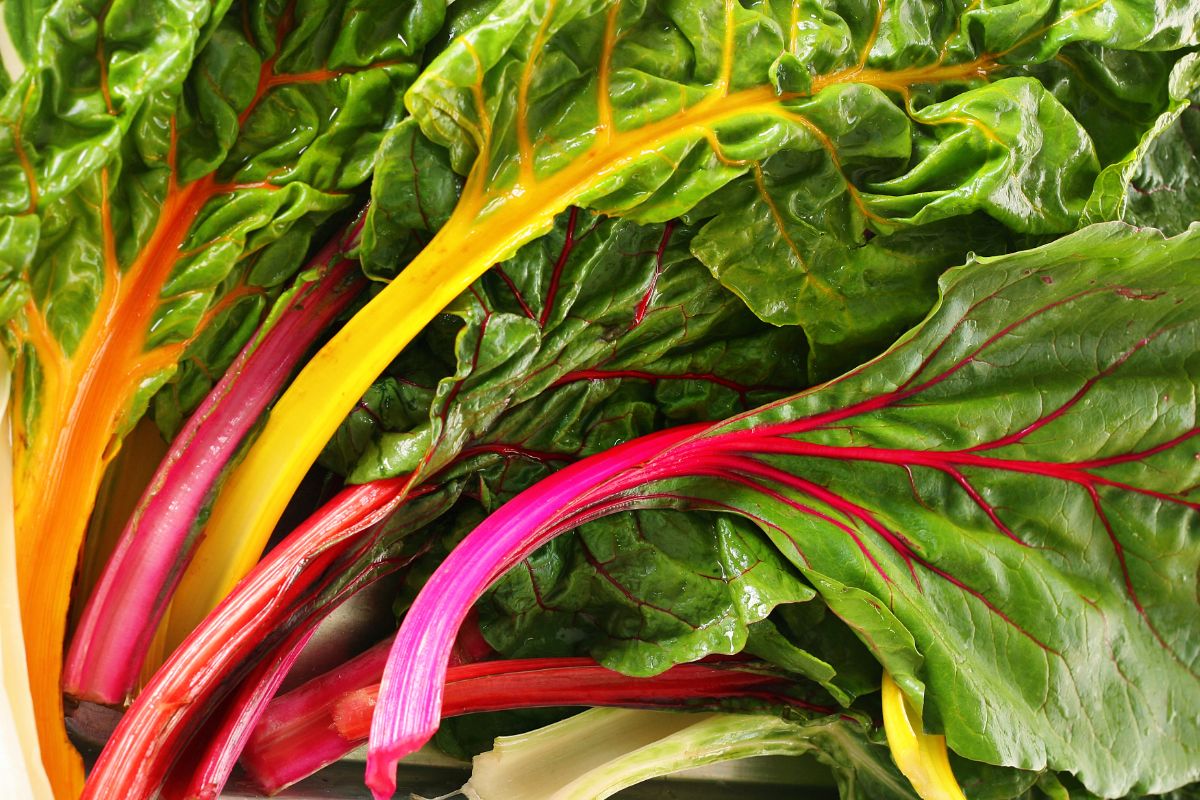
| Plant name: | Swiss Chard |
| Lighting requirements: | Full sun to part shade |
| Watering requirements: | Moderate |
| Recommended varieties for fall? | ‘Bright Lights,’ ‘Silverado,’ ‘Magenta Sunset’ |
| When to plant for fall harvest? | 40 days before first frost date |
While lettuce can withstand some cooler weather, it’s usually best to harvest lettuce crops in early autumn. However, if you’re hankering for leafy greens later in the season, you may want to keep hardier leafy vegetables for salad making and other recipes. And one good option is Swiss chard.
Swiss chard doesn’t mind the cold one bit, and it can survive frost and even continue to grow after temperatures drop into the 20s. Plus, if you’re looking for a vegetable to add color to your autumn garden, Swiss chard has such bright stems many gardeners grow it for ornamental appeal alone. And if you needed even more reasons to grow Swiss chard later in the season, pests are much less likely to plague your crops when temperatures drop!
6. Radishes

| Plant name: | Radishes |
| Lighting requirements: | Full sun |
| Watering requirements: | Moderate |
| Recommended varieties for fall? | ‘Watermelon,’ ‘Round Black Spanish,’ ‘Misato Rose’ |
| When to plant for fall harvest? | Early fall |
Radishes are some of the fastest-growing crops you can keep, and you can harvest some radishes in as little as 21 days. So, if you’re looking for a final crop to squeeze into your garden before winter sets in for good, you may want to try out some of the faster-growing radish types, like ‘Easter Egg’ radishes and ‘French Breakfast’ radishes.
On the other hand, if you love trying new flavors and vegetables, some slower-growing radishes can only be grown in autumn gardens as they need extended cool to grow properly. ‘Watermelon’ radishes and ‘Round Black Spanish’ radishes, for example, are much happier when planted in late summer and harvested in autumn.
7. Spinach
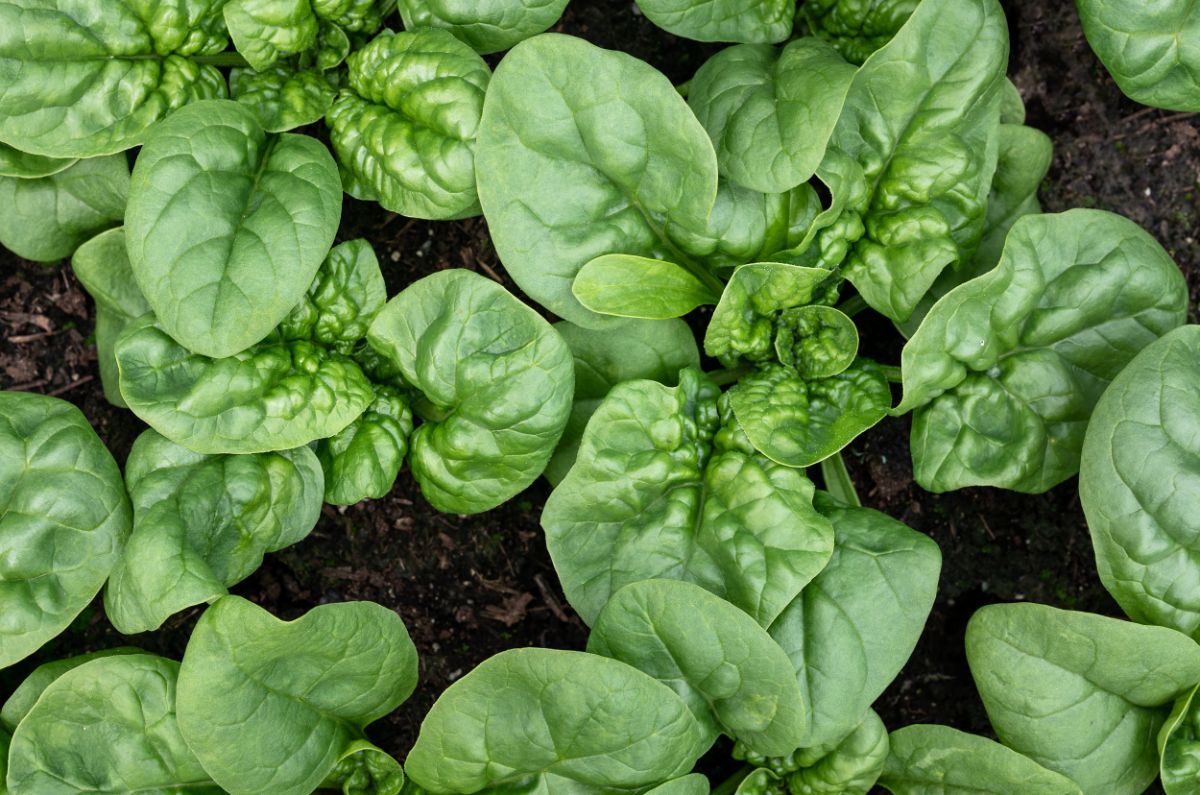
| Plant name: | Spinach |
| Lighting requirements: | Full sun to part shade |
| Watering requirements: | Moderate |
| Recommended varieties for fall? | ‘Bloomsdale,’ ‘Giant Winter,’ ‘Tundra’ |
| When to plant for fall harvest? | 6 to 8 weeks before the first frost date |
Like dill, spinach is rather notorious for its finicky nature and tendency to bolt at the first signs of heat. While spinach is often grown in spring gardens, if you live in a cooler climate with a short spring season, spring-planted spinach may not have enough time to mature before summer arrives. One easy solution to prevent bolting spinach is to only grow spinach in autumn.
Although spinach hates the heat, it loves cold weather, and it can even handle a heavy frost and temperatures in the 20s. If you want to extend your spinach harvest even longer, you can protect your plants with cloches or cover them up with row tunnels. When grown in this manner, you may even be able to harvest spinach in the winter!
8. Broccoli
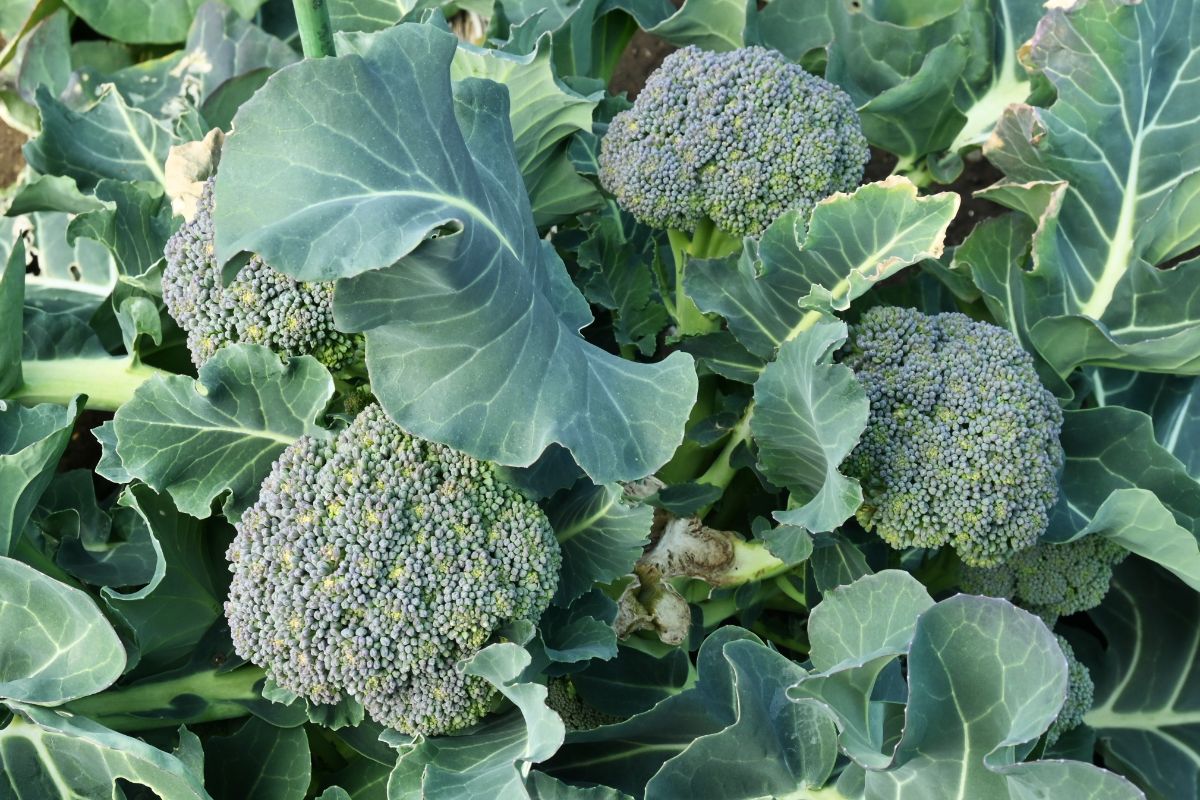
| Plant name: | Broccoli |
| Lighting requirements: | Full sun |
| Watering requirements: | Moderate |
| Recommended varieties for fall? | ‘Waltham 29,’ ‘Tendergreen,’ ‘Solstice’ |
| When to plant for fall harvest? | Mid-to-late summer |
Broccoli is another cruciferous vegetable that often struggles to grow in hot weather. Most seed packets recommend that you grow broccoli in either spring or autumn, and plants can be sown directly in garden beds, or they can be transplanted outdoors once they’ve grown a few true leaves. Often, planting broccoli in autumn is even easier than spring planting as the seedlings won’t be subjected to the repeated freeze-and-thaw cycles that are common in spring.
Broccoli plants can handle frost and temperatures in the 20s. For an even longer harvest, row tunnels are always recommended, but you can also go the DIY route and insulate your broccoli plants with bales of straw. Cover the bales with an old window to let light in, and you can harvest broccoli in winter too!
9. Beets
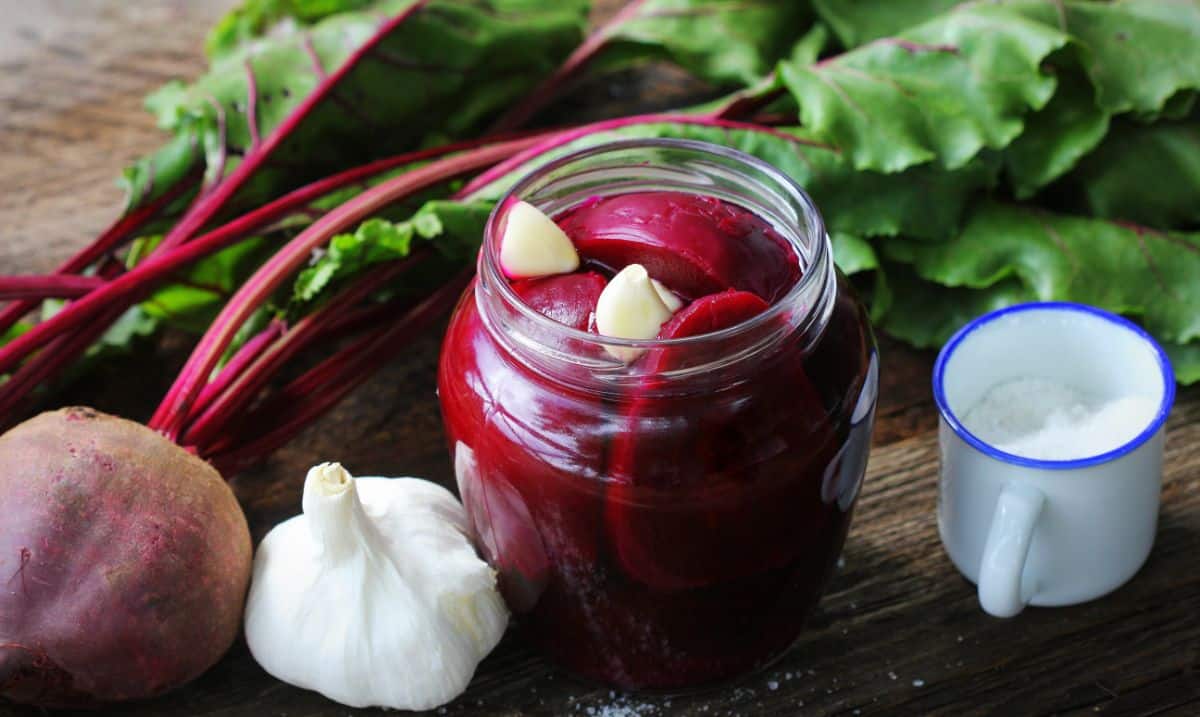
| Plant name: | Beets |
| Lighting requirements: | Full sun |
| Watering requirements: | Moderate |
| Recommended varieties for fall? | ‘Bull’s Blood,’ ‘Robin,’ ‘Eagle’ |
| When to plant for fall harvest? | 4 to 6 weeks before first frost date |
Like carrots, beets can sometimes struggle in the heat, which causes their flavor to decline. But if you grow beets in cooler weather, they usually have a more intense taste and a luscious sweetness that’s hard to… well… beat!
Beets are relatively fast-growing vegetables, and they’re so cold-hardy they can even be grown up until the ground freezes solid. Growing beets in autumn will provide you with plenty of root veggies for your root cellar, and you can also can beets for winter preserving. While most growers harvest beets for their roots, beet greens are edible, and they’re more resistant to the cold than lettuces and many other leafy greens.
10. Cilantro
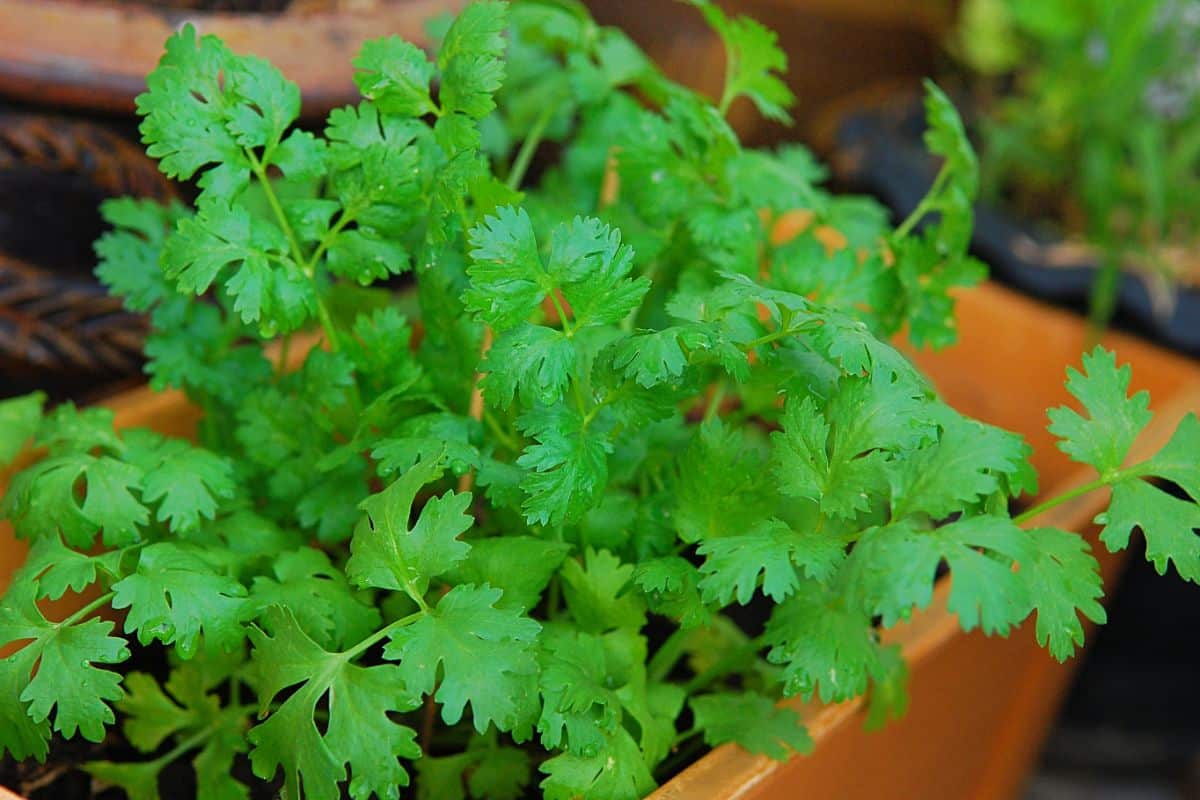
| Plant name: | Cilantro |
| Lighting requirements: | Full sun to part shade |
| Watering requirements: | Moderate |
| Recommended varieties for fall? | ‘Longstanding,’ ‘Caribe’ |
| When to plant for fall harvest? | In fall, after temperatures are below 80 degrees |
Many herbs grow as perennials and can be harvested throughout the season, but cilantro doesn’t grow well in the heat, and it often needs to be planted sequentially to ensure a continuous harvest. To prevent bolting, some growers plant cilantro every 2 to 3 weeks throughout the growing season. But if you like a more minimal approach, you can also just grow cilantro in spring and autumn and harvest this herb in cool weather.
Growing cilantro at the end of the season will provide you with lots of tasty herbs for freezing and drying. What’s more, cilantro is the perfect addition to homemade salsas, so if you love home preserving, don’t forget to plant some autumn cilantro. That way, you’ll have cilantro ready to harvest just in time for canning season.
11. Peas
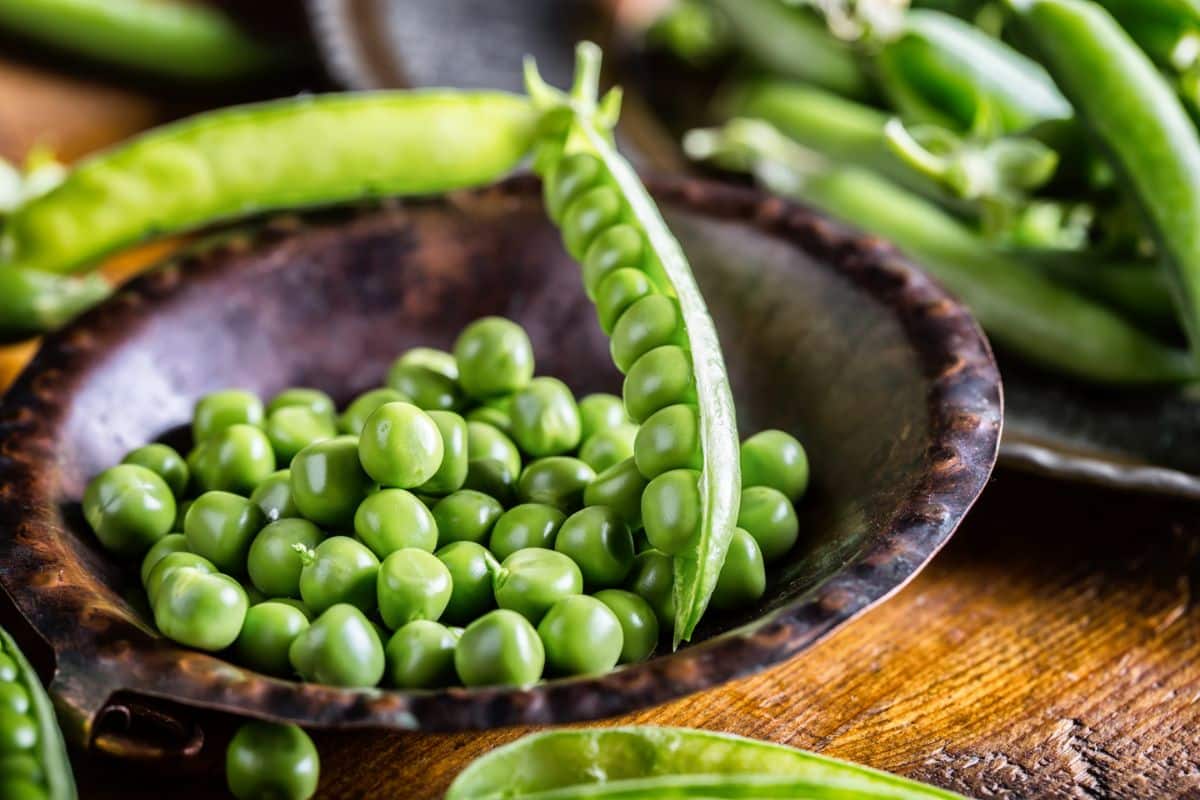
| Plant name: | Peas |
| Lighting requirements: | Full sun |
| Watering requirements: | Moderate |
| Recommended varieties for fall? | ‘Tops,’ ‘Lincoln,’ ‘Green Arrow’ |
| When to plant for fall harvest? | 8 to 10 weeks before first frost date |
Pea plants are common sights in spring gardens, but they die back during the summer heat. However, if you love fresh shelling peas, you can prolong your harvest by growing a second crop of peas towards the end of the season.
When grown in cool weather, pea plants are generally much more productive, and they can be harvested for longer. For a larger harvest of peas, pick peas every few days. This will encourage your plants to produce more pods, and you’ll get even more peas for fresh eating and canning.
12. Mustard
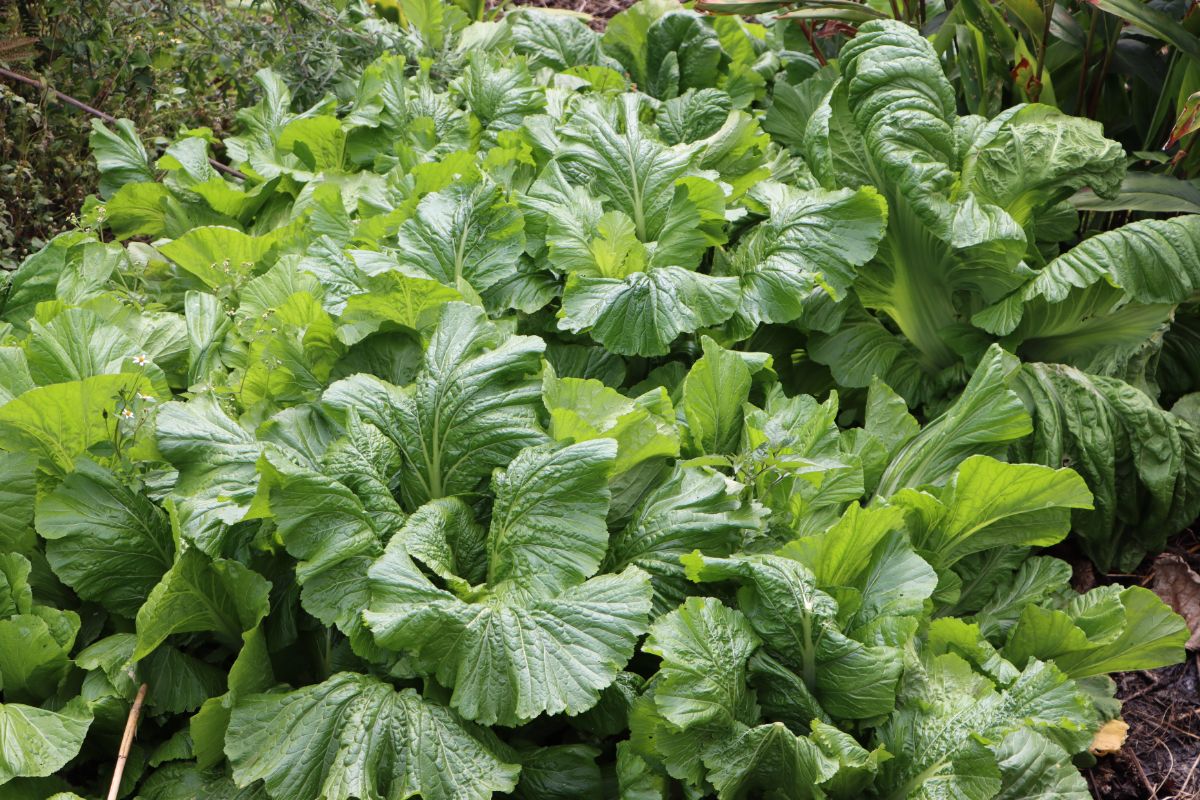
| Plant name: | Mustard |
| Lighting requirements: | Full sun to part shade |
| Watering requirements: | Moderate |
| Recommended varieties for fall? | ‘Green Wave,’ ‘Red Giant,’ ‘Even’Star Chinese’ |
| When to plant for fall harvest? | 6 to 8 weeks before first frost date |
Another member of the cruciferous family, mustard also grows beautifully in autumn, and mustard flavor tends to brighten and sweeten when the plant is exposed to cool weather. If you’ve ever shied away from growing mustard greens because of their heat, you may want to grow an autumn harvest of greens since they’ll be less likely to develop spicy or bitter flavors.
Mustard greens aren’t as commonly used today as many other leafy vegetables, but we hope that changes! Mustard greens can be cooked and used just like kale or spinach, or you can eat them raw in salads for an unexpected zing. If mustard plants are allowed to flower, they’ll also provide you with lots of seeds that can be ground into homemade mustard or pickling spices.
13. Turnips
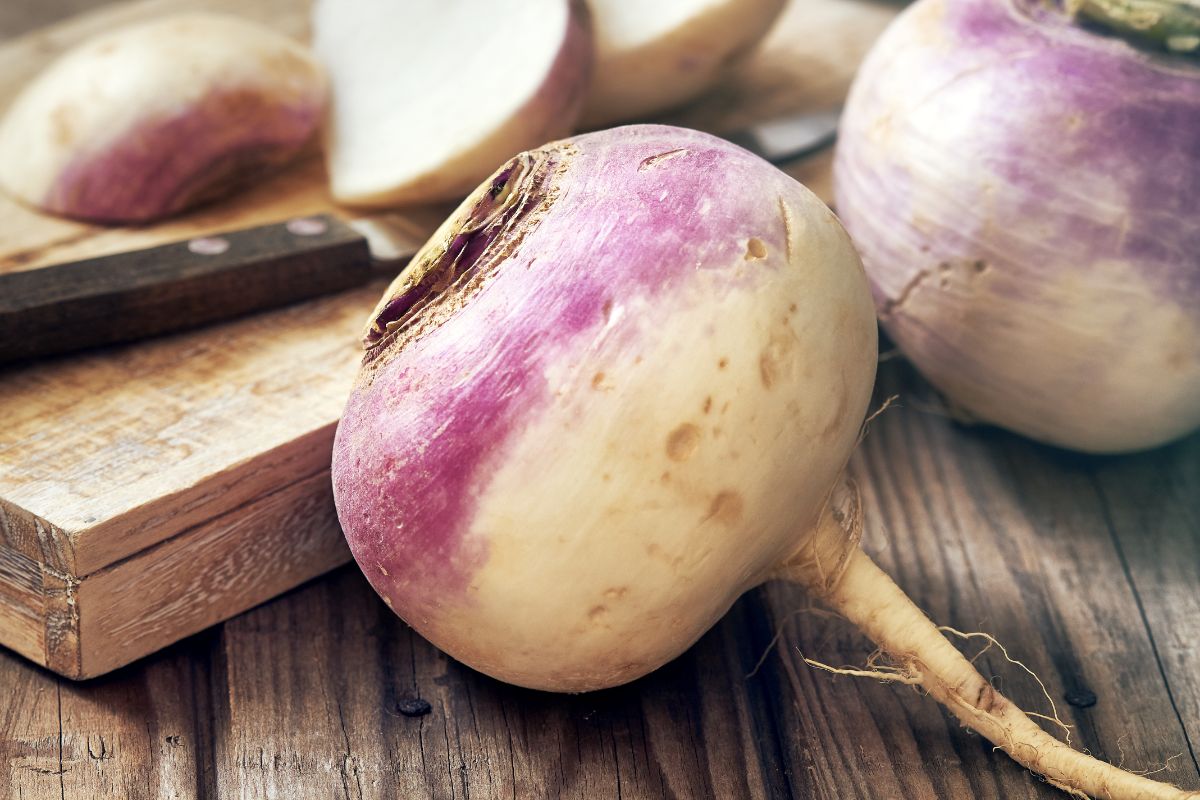
| Plant name: | Turnips |
| Lighting requirements: | Full sun |
| Watering requirements: | Moderate |
| Recommended varieties for fall? | ‘White Egg,’ ‘Gilfeather’ |
| When to plant for fall harvest? | Late August to October |
Despite their size, turnips are surprisingly fast-growing plants, and they can be harvested in about 6 to 10 weeks. Planting turnips toward the end of the season can help you get more use out of your garden beds after your main crop of tomatoes and cucumbers have stopped producing. Plus, turnip roots can also help loosen up compact soil to prepare it for next year’s planting.
When turnips are grown in summer, they often bolt, or their stems can become woody and unpleasant to eat. Autumn-harvested turnips, on the other hand, are usually much sweeter, and they have the perfect texture for baking, roasting, and soup-making!
14. Radicchio

| Plant name: | Radicchio |
| Lighting requirements: | Full sun to part shade |
| Watering requirements: | Moderate |
| Recommended varieties for fall? | ‘Radicchio di Trevisio,’ ‘Fiero’ |
| When to plant for fall harvest? | Mid-summer |
Radicchio is an often overlooked leafy vegetable, but it’s a great plant to grow in autumn gardens. Like many other cool-weather crops, radicchio can struggle in hot weather, and it often tends to bolt. But in fall gardens, radicchio grows like a champ, and frosts make it even sweeter.
Radicchio seeds are less commonly sold in stores, but you can usually find them online, or you can order them from your favorite seed catalog. Beyond being delicious in salads and as a garnish, radicchio has a fiery, purplish-red color that gives this veggie ornamental appeal as well.
15. Leeks

| Plant name: | Leeks |
| Lighting requirements: | Full sun |
| Watering requirements: | Moderate |
| Recommended varieties for fall? | ‘King Sieg,’ ‘Siegfried Frost,’ ‘Bleu de Solaize’ |
| When to plant for fall harvest? | 12 weeks before first frost date |
While leeks can generally handle hot weather, these plants grow best in cooler temperatures and are commonly planted in spring and autumn gardens. However, leeks are slow growers, so you need to plan ahead if you want to harvest a fall crop of leeks. Many leeks take about 120 to 150 days to mature, meaning you’ll need to plant seeds in late spring to early summer if you want to gather your leeks before winter arrives.
Alternatively, because leeks can tolerate cold weather so well if you live in a mild climate, you can also overwinter leeks outdoors. For cozy autumn soups like vichyssoise, there’s nothing like homegrown leeks!
16. Mache

| Plant name: | Mache |
| Lighting requirements: | Full sun to part shade |
| Watering requirements: | Moderate |
| Recommended varieties for fall? | ‘Verte d’Etampes,’ ‘Verte de Cambrai’ |
| When to plant for fall harvest? | Mid-August through mid-September |
Mache is a less commonly grown leafy green that’s often kept in winter gardens, but it can be cultivated in autumn too. Also known as corn salad, mache has a delicious, nutty flavor, and it can be used in salads or as a garnish on sandwiches and other dishes. Mature plants grow in a rosette form, and like many other greens, they can be harvested all at once, or leaves can be picked little by little for an extended harvest.
If you’re new to working with mache, it can often be tricky to find the seeds, but they are usually available online or from seed catalogs. Some of the most popular varieties of mache to grow include ‘Verte d’Etampes’ and ‘Verte de Cambrai.’
17. Kale
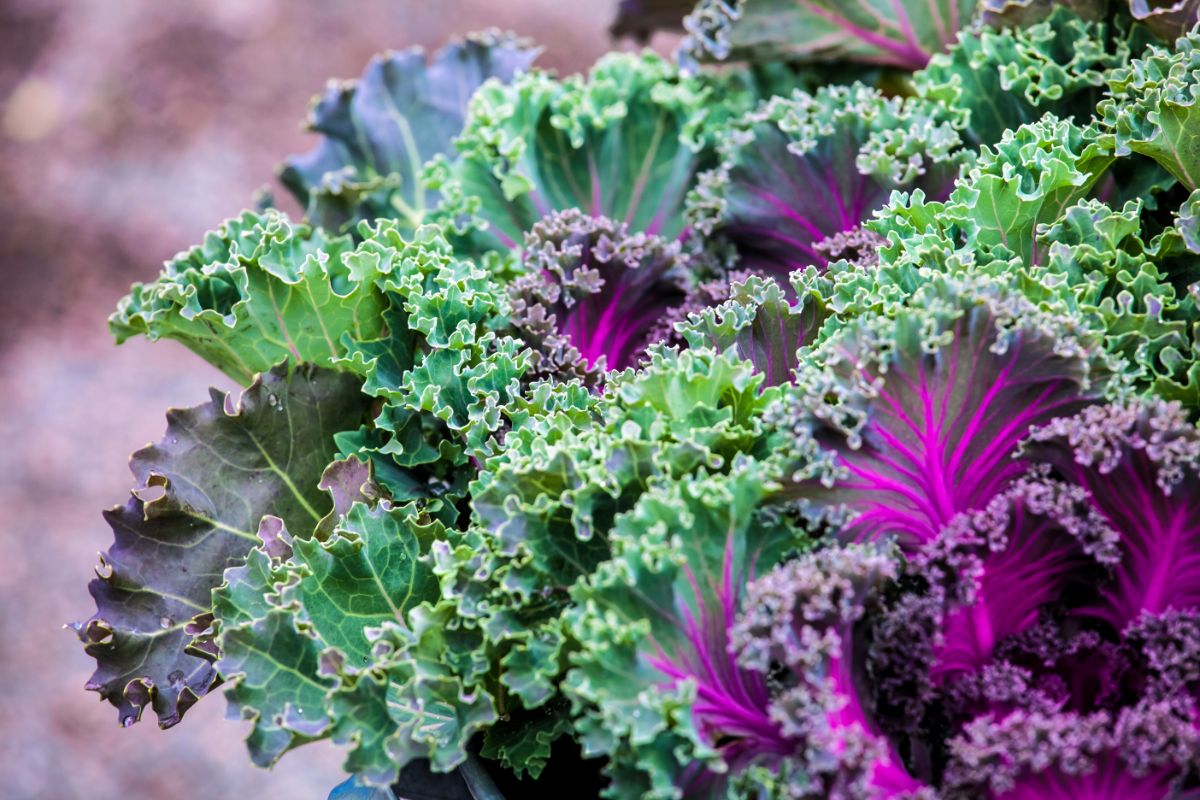
| Plant name: | Kale |
| Lighting requirements: | Full sun to part shade |
| Watering requirements: | Moderate |
| Recommended varieties for fall? | ‘White Russian,’ ‘Winterbor,’ ‘Redbor’ |
| When to plant for fall harvest? | 6 to 8 weeks before first frost date |
Cold weather is no problem for kale, so you don’t need to worry about growing kale later in the season. While many gardeners grow kale in autumn beds, with a bit of winter protection, you can often extend kale harvest well into winter. Both curly and lacinato-type kales are good for fall plantings, but if you want even more color, you can try out red kale varieties like ‘Red Russian,’ ‘Scarlet,’ and ‘Redbor’ kale.
As with Swiss chard, one of the best parts of growing kale in autumn is that you’re less likely to encounter pests. Additionally, while all kale plants are quite attractive, ornamental kale varieties are commonly grown in container gardens, and they provide spectacular color when combined with chrysanthemums and other autumn favorites.
18. Onions
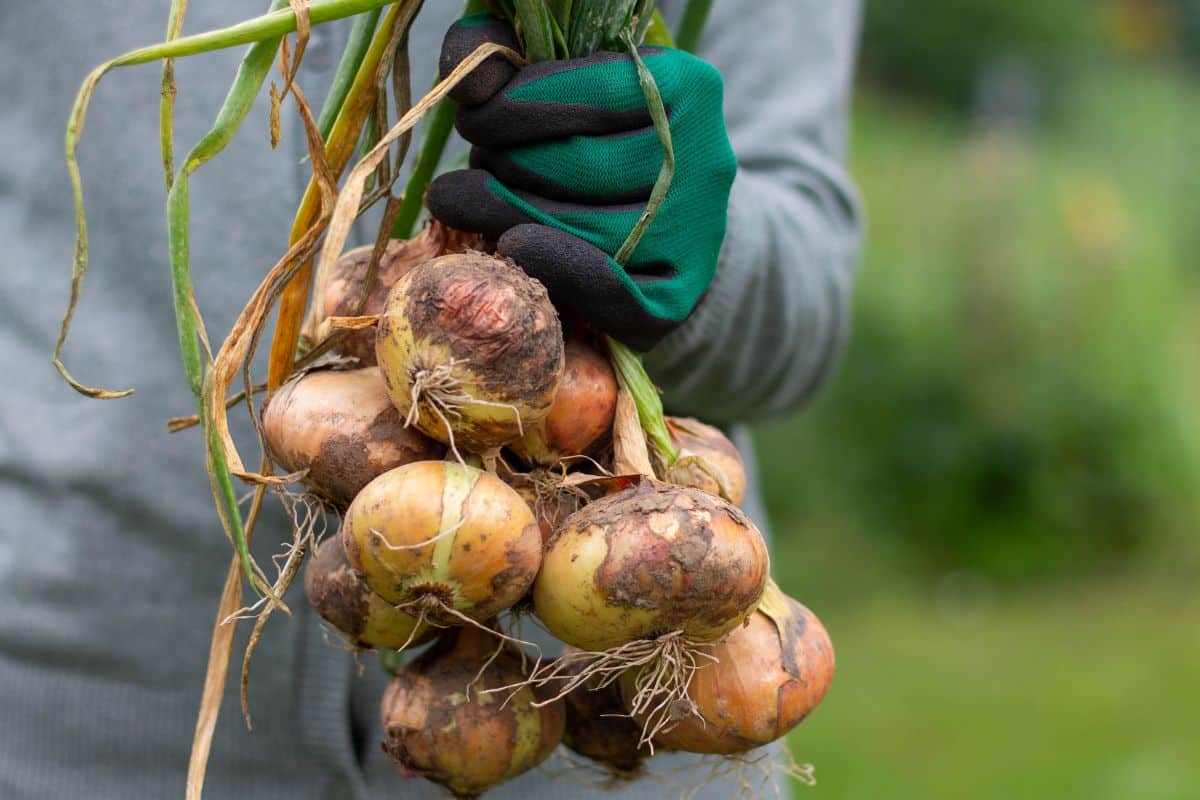
| Plant name: | Onions |
| Lighting requirements: | Full sun |
| Watering requirements: | Moderate |
| Recommended varieties for fall? | ‘Red Bull,’ ‘Talon,’ ‘Rossa di Milano’ |
| When to plant for fall harvest? | Spring |
Like leeks, onions are staples in fall gardens, and many onions overwinter well in root cellars. Growing a late harvest of onions is a good way to ensure your pantry is stocked with onions for the winter months, and you’ll also have plenty of onions on hand for canning and pickling recipes.
Onions are slow growers, and some varieties can take up to 175 days to mature. For this reason, if you want to harvest onions in autumn, you’ll need to get your onion seeds or sets in the soil early in the season.
19. Garlic
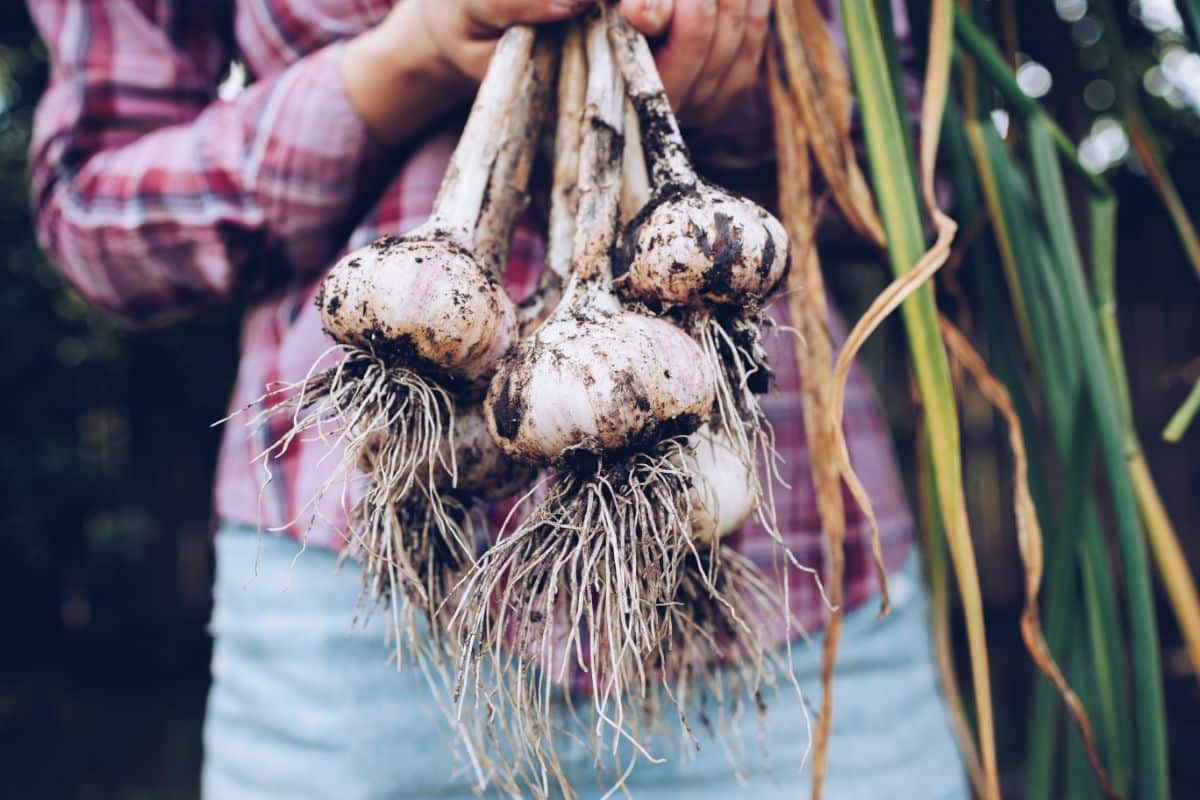
| Plant name: | Garlic |
| Lighting requirements: | Full sun |
| Watering requirements: | Moderate |
| Recommended varieties for fall? | ‘German Extra Hardy,’ ‘Siberian,’ ‘Music’ |
| When to plant for fall harvest? | Planted in October for summer harvest |
One of the most satisfying tasks to perform in autumn gardens is planting garlic. While garlic is generally not harvested in autumn, garlic cloves are slow to mature into bulbs, and they need to be planted well in advance. For a summer harvest of garlic, garlic cloves are usually planted in October.
Planting garlic isn’t difficult, but you do need to keep an eye on the weather to make sure you get your cloves in the ground before the ground freezes solid. Both hardneck and softneck garlic varieties can be grown in home gardens, although hardneck garlic is the variety you need if you want to grow garlic scapes. It’s always recommended to mulch over your garlic cloves after planting as this insulates the soil and boosts germination rates too.
20. Arugula
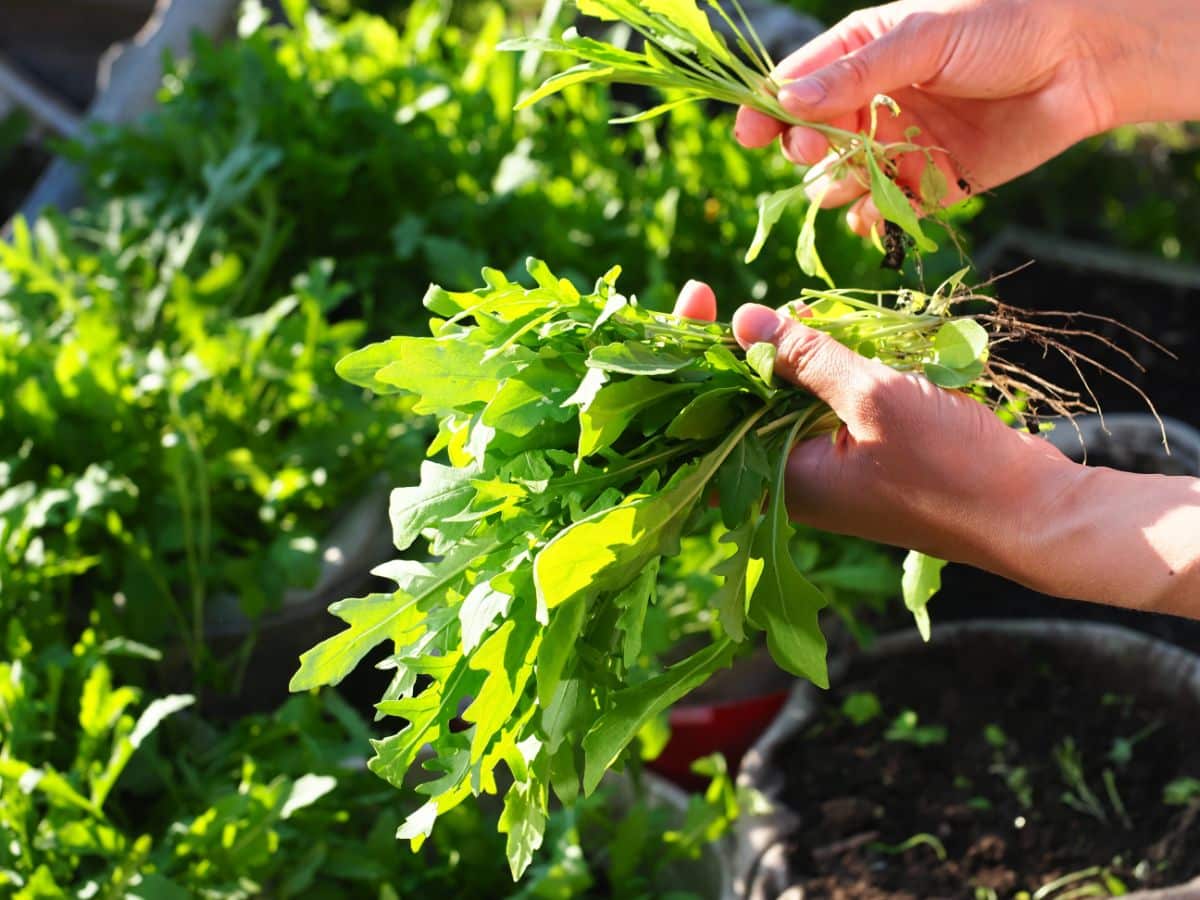
| Plant name: | Arugula |
| Lighting requirements: | Full sun |
| Watering requirements: | Moderate |
| Recommended varieties for fall? | ‘Ice Bred,’ ‘Astro’ |
| When to plant for fall harvest? | Late summer to fall |
Arugula bolts in the heat, but it’s a winner in spring and autumn gardens. Arugula can withstand some frost, and you may even be able to grow arugula into the winter months if you install cloches or row covers over your plants. While arugula is mostly known for its peppery flavor that’s irresistible in fresh salads, this leafy green can also be cooked into recipes just like spinach!
21. Cauliflower
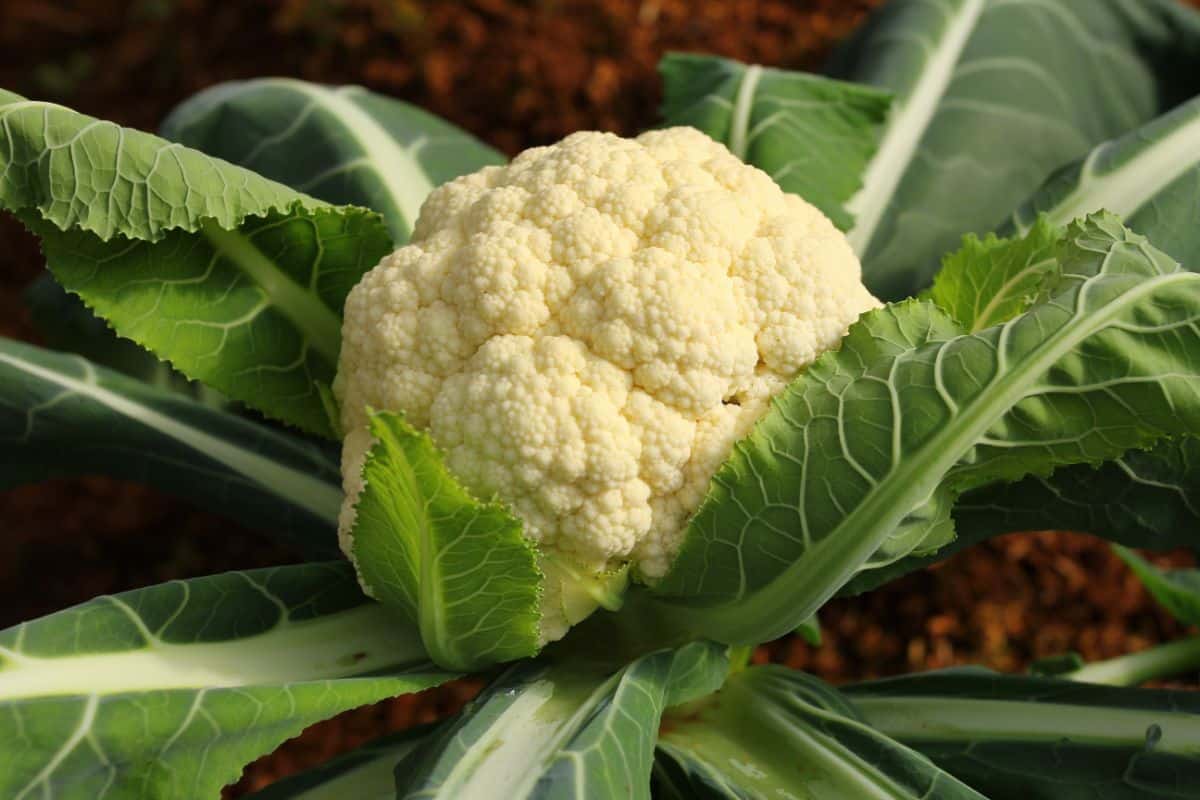
| Plant name: | Cauliflower |
| Lighting requirements: | Full sun |
| Watering requirements: | Moderate |
| Recommended varieties for fall? | ‘Candid Charm,’ ‘Bermeo’ |
| When to plant for fall harvest? | 6 to 8 weeks before first frost date |
Like broccoli, cauliflower can be a real hassle to grow in summer gardens. In the heat, cauliflower often bolts, or it may not produce any heads at all. Worse still, when cauliflower crowns get too much sun in summer, they often discolor.
However, you can avoid most of these issues by growing cauliflower plants in autumn. Try out cold weather favorites like ‘Candid Charm’ and ‘Bermeo’ and make sure you get your cauliflower planted at least 6 to 8 weeks before frost is expected so your plants have plenty of time to mature.
22. Endives
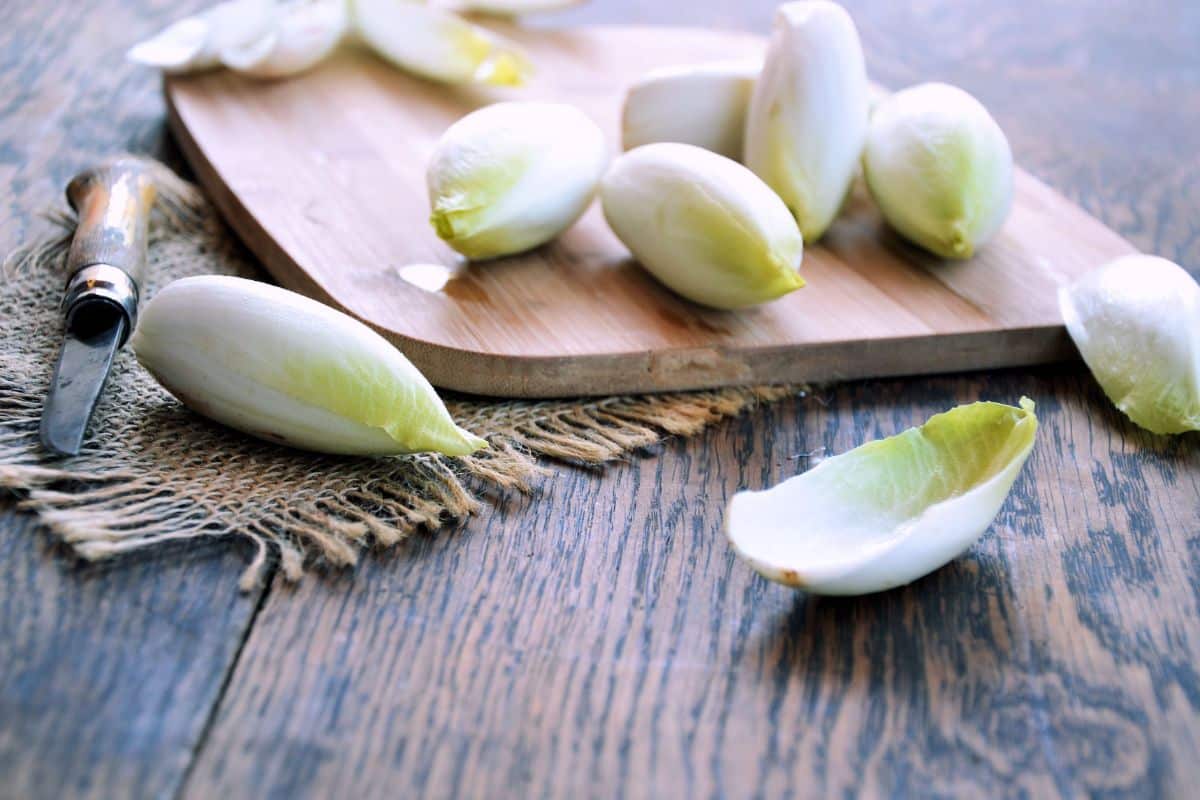
| Plant name: | Endives |
| Lighting requirements: | Full sun |
| Watering requirements: | Moderate |
| Recommended varieties for fall? | ‘Full Heart Batavian,’ ‘Frisee’ |
| When to plant for fall harvest? | Late summer |
If you love unusual greens or you like a bit of bitter flavor in your fresh salads, you may want to grow endives in your autumn garden too. A close relative of radicchio, endives are very hardy plants, and their flavor actually improves when they’re exposed to lower temperatures. Cooking actually mellows out endives’ bitterness, so if you haven’t enjoyed endives in the past, you may want to try cooking them first!
23. Parsnips
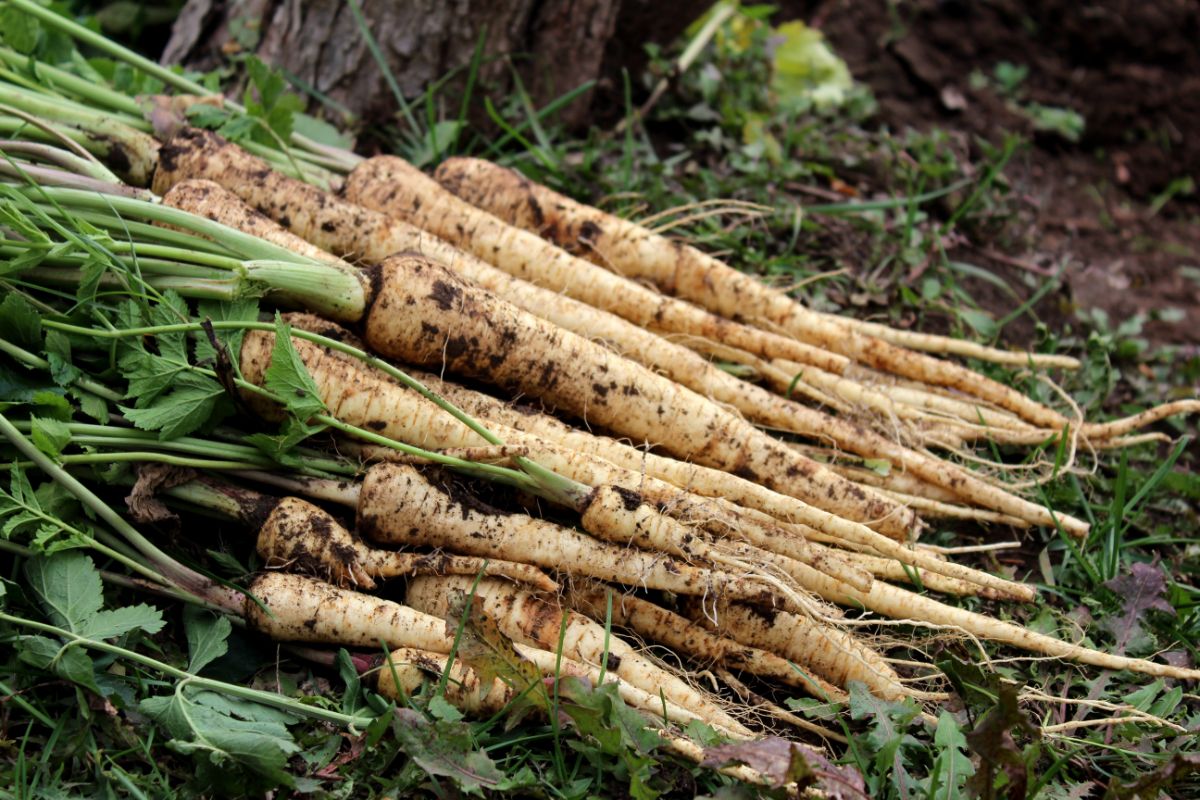
| Plant name: | Parsnips |
| Lighting requirements: | Full sun to part shade |
| Watering requirements: | Moderate |
| Recommended varieties for fall? | ‘Andover,’ ‘Harris Model’ |
| When to plant for fall harvest? | Spring |
Parsnips may look a lot like carrots, but they have a much longer growing season. When planted in spring to early summer, parsnips won’t be ready to harvest until fall. The good news is once you harvest parsnips in autumn, you’ll have plenty of delicious veggies for your root cellar, and their flavor only improves with cold weather.
24. Collard greens
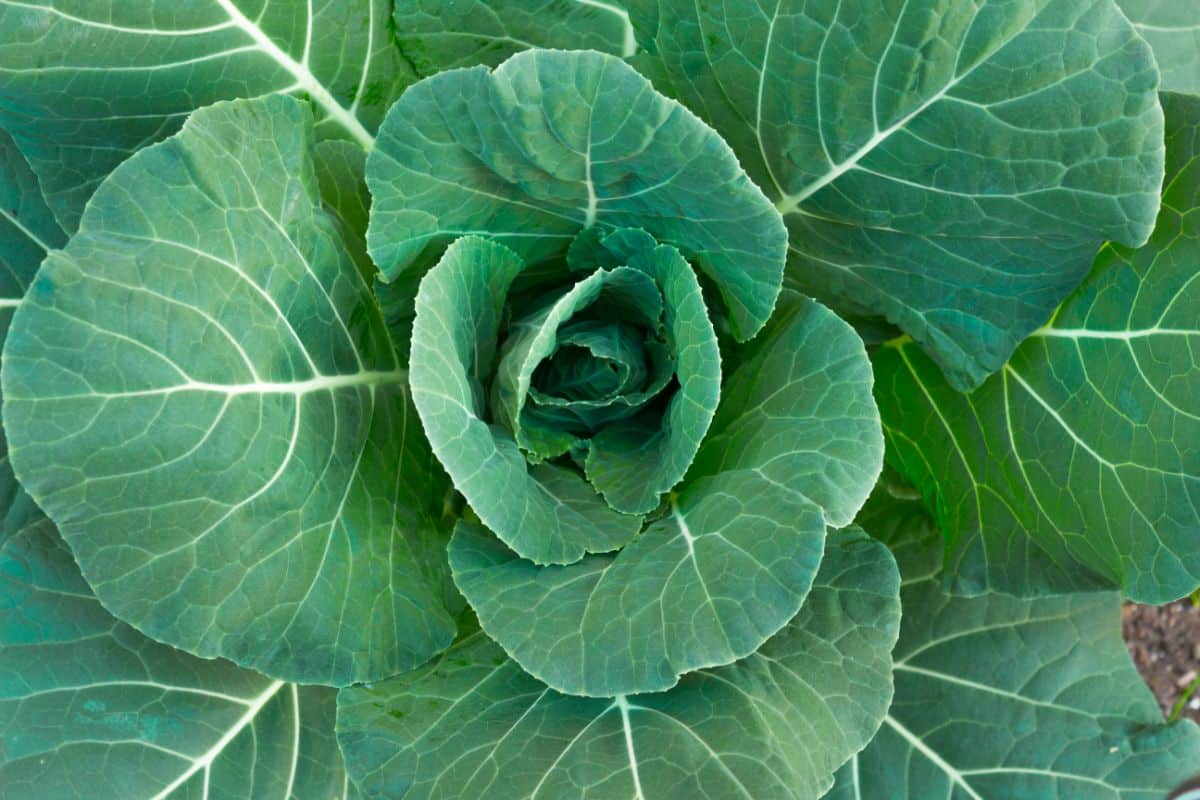
| Plant name: | Collard greens |
| Lighting requirements: | Full sun to part shade |
| Watering requirements: | Moderate |
| Recommended varieties for fall? | ‘Flash,’ ‘Champion’ |
| When to plant for fall harvest? | 6 to 8 weeks before first frost date |
Collard greens can grow just fine in cooler climates, and they’re a delicious and nutritious addition to autumn garden beds. With extra protection, you may be able to keep collard greens growing into winter. Plus, there are few things quite as cozy as a steaming bowl of soup thick with homegrown root vegetables and collard greens on a cool day!
Summary

Growing cool-weather crops is a great way to bulk up your harvest and have the freshest ingredients on hand for canning, pickling, and other preserves. Many vegetables also store well in root cellars, and late harvests can be preserved by dehydrating and freezing too.
When you keep a successful autumn garden, you may find yourself overrun with more vegetables than you know what to do with after finishing your harvest. If this is the case, check out our guide on lacto-fermentation or learn how to store veggies in cold storage with our other beginner-friendly guides.

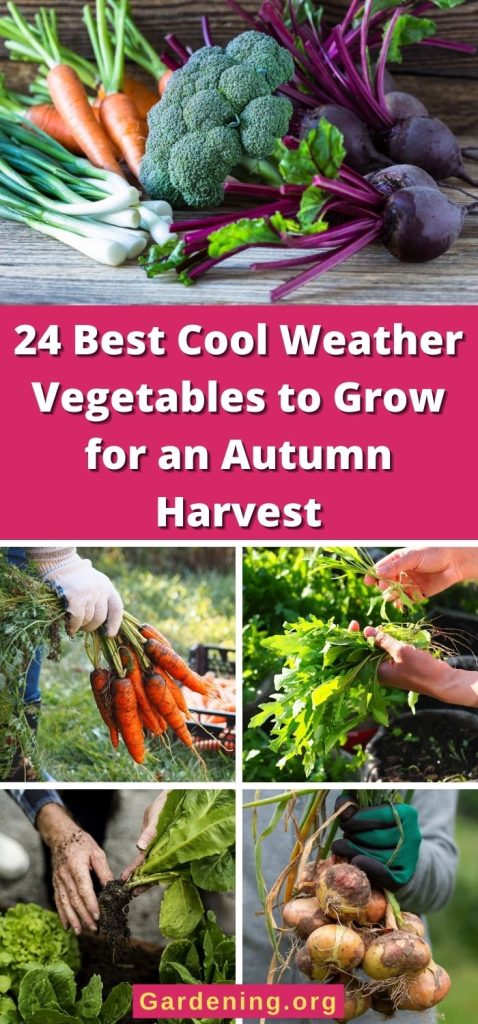
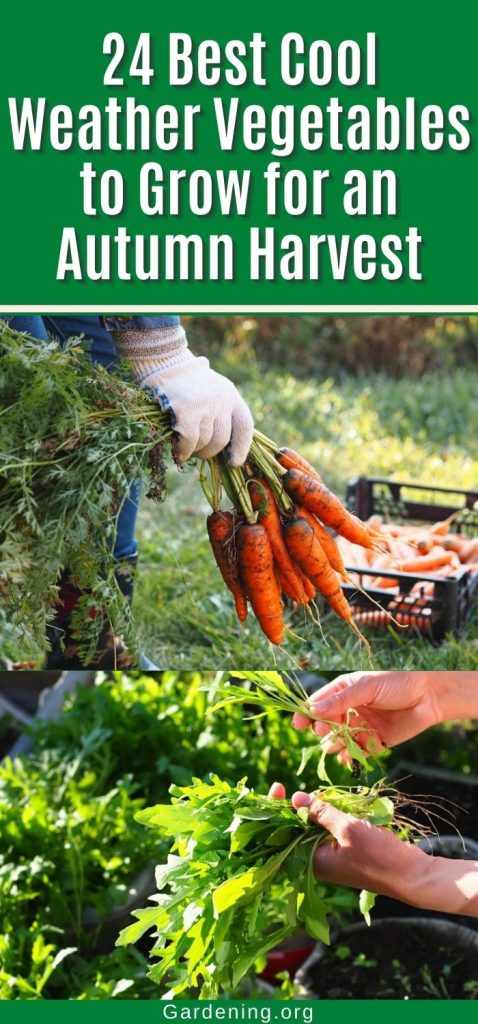

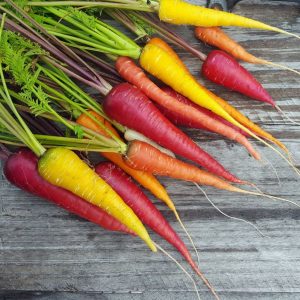
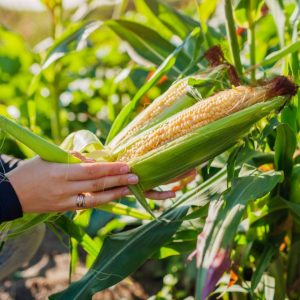
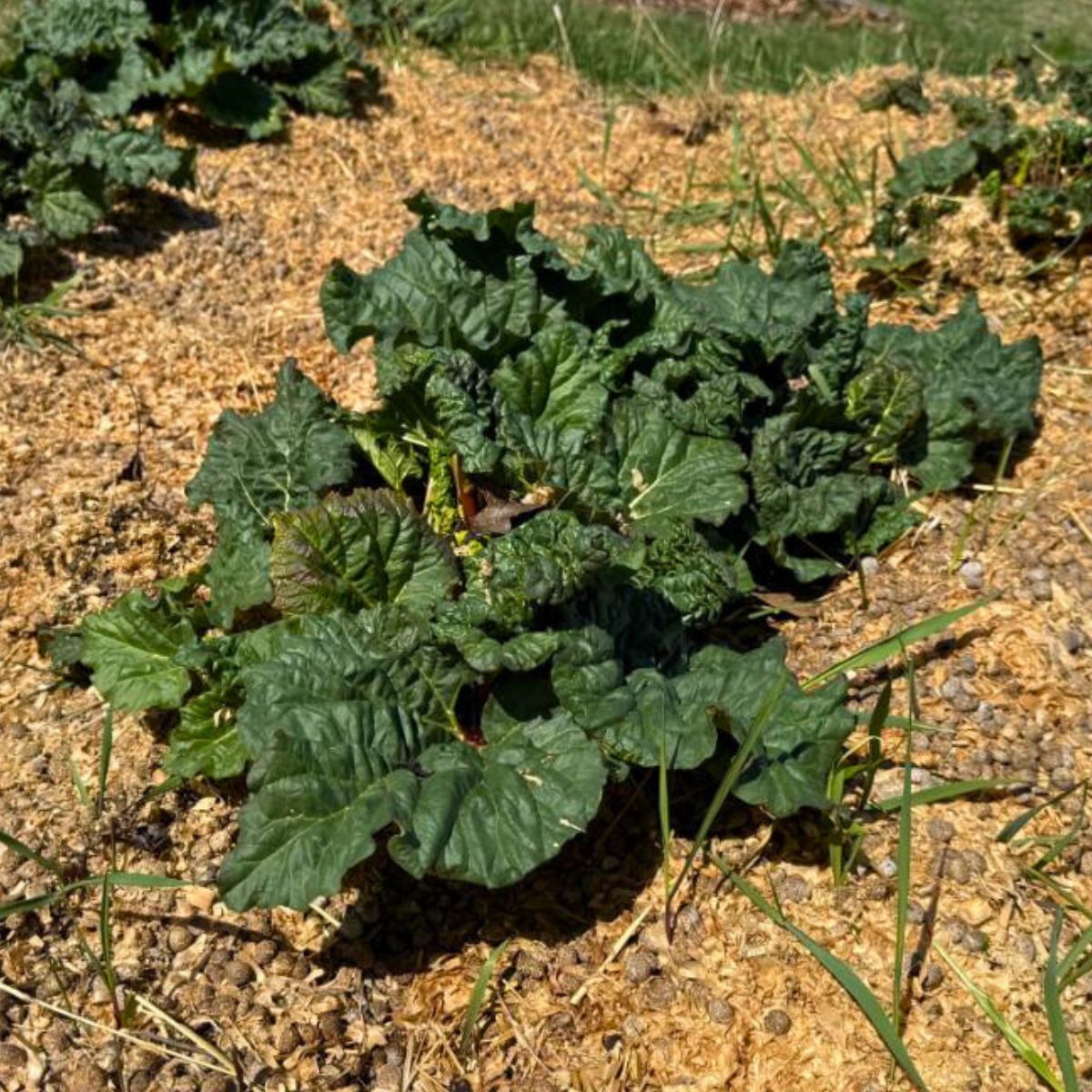
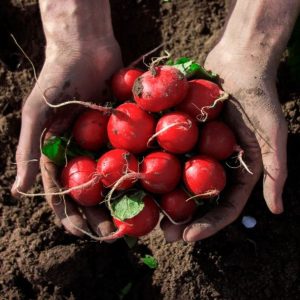
Leave a Reply